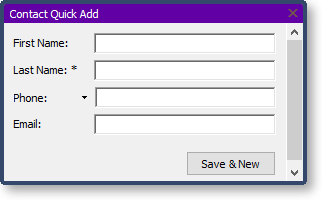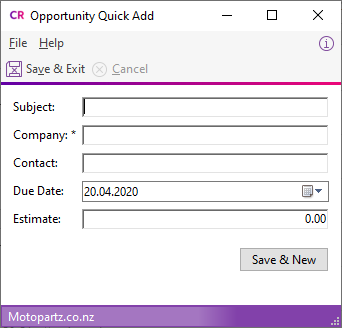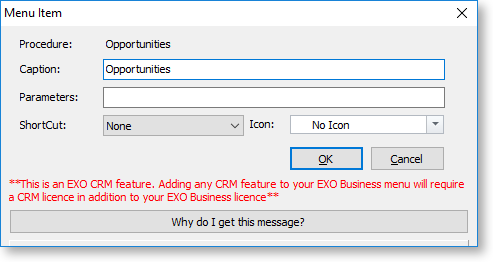Exo Business CRM
Use Exo Business CRM to keep track of:
You can also:
- Set up pricing and discounting details.
- Create Sales Orders.
- Edit Sales Orders if they have the status Not Processed, Quotation, Standing Order, or Layby.
- Create and edit stock items, including One-Off Stock items.
- Use Bills of Materials.
- Use the serial number and batch number searching and tracking functions.
Note: You cannot process Sales Orders, supply stock, or raise invoices from Exo Business CRM.
The Exo Business CRM interface makes extensive use of Dashboard widgets, enabling you to tailor the interface to each user’s needs.
Outlook Integration
Exo Business CRM integrates with Microsoft Outlook for the two-way synchronisation of Contacts and Activities. If Outlook is not installed, all integration functions are disabled.
Note: Synchronisation with Microsoft Exchange Server is not supported.
Quick Add Widgets
You can use Quick Add functions to create Activities, Companies, Contacts, and Opportunities. You can open records and complete them later.
Quick Add functions are available as Dashboard widgets and as standalone windows:
 |
 |
Licensing
The Exo Business CRM module requires separate licences to run. You use one CRM licence when you log into Exo Business CRM.
You can add CRM features, such as creating and editing Opportunities, to menus in Exo Business Core. When you do that, CRM-specific functions are enabled throughout Exo Business — for example, the Opportunities tab is enabled in the Debtors and Creditors windows. Authorised users can manage the end-to-end process in Exo Business without switching between the core and CRM modules. However, doing so uses a core licence and a CRM licence.
If an employee starts Exo Business Core module and CRM features have been added but a CRM licence is not available, they can quit or run Exo Business with all CRM features disabled.
CRM-specific menu items are marked in the Menu Designer, to avoid users inadvertently using CRM licences by mistakenly adding CRM function to a core menu:

